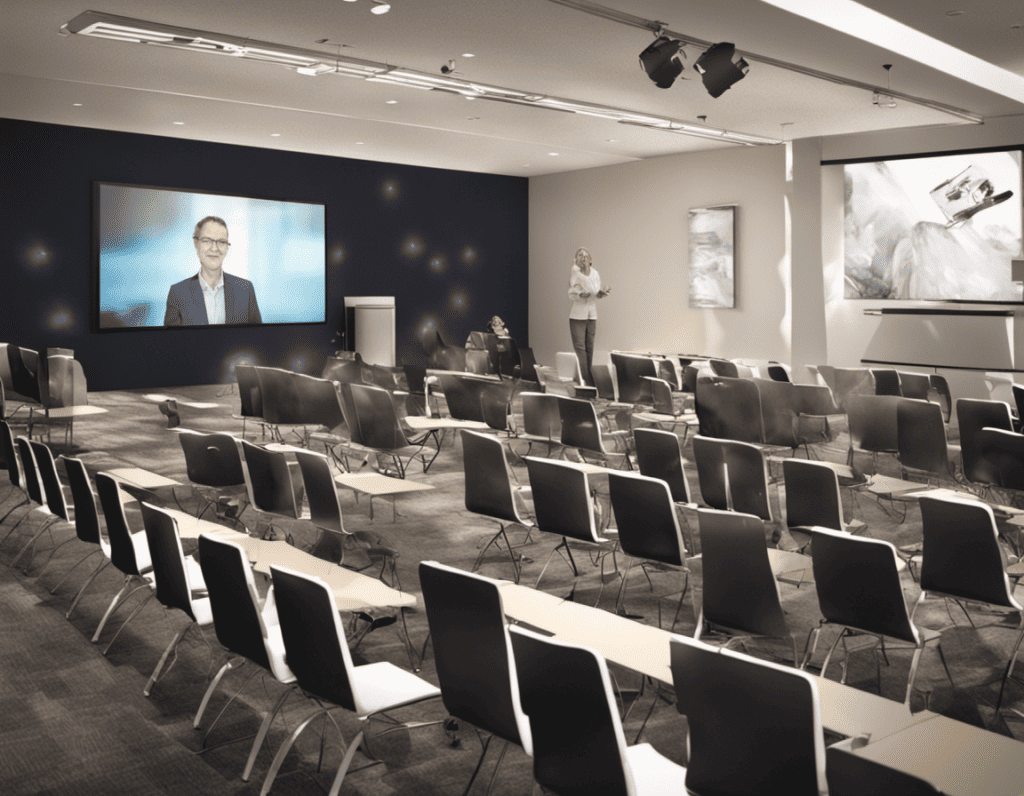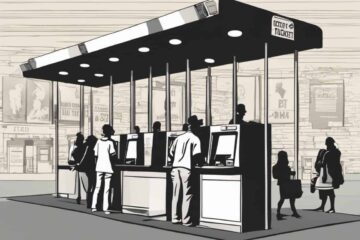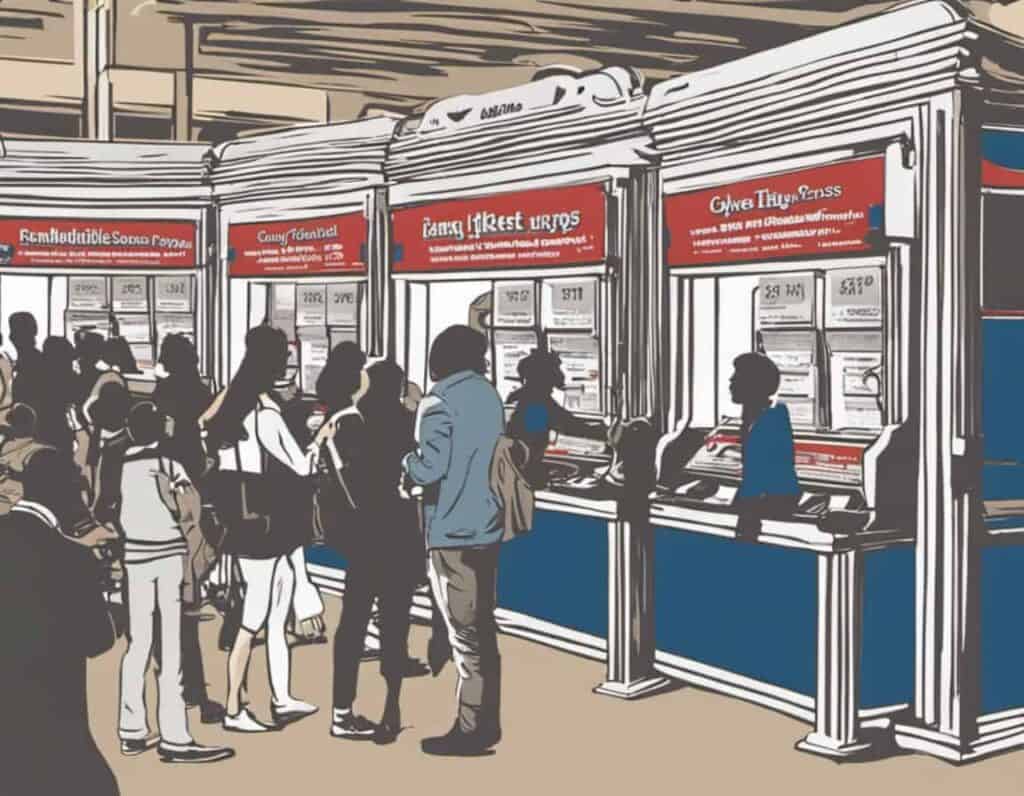In the ever-evolving landscape of nonprofit fundraising, the rise of hybrid events marks a pivotal shift in how organizations connect with their communities and donors.
As a leader or member of a fundraising team, understanding and effectively leveraging these events can be a game-changer for your nonprofit. This blog serves as your comprehensive guide to navigating the world of hybrid fundraising events, blending in-person and virtual elements to maximize your impact.
Comparing In-Person, Virtual, and Hybrid Events
Exploring fundraising events, especially in the nonprofit context, requires understanding the differences between hybrid, in-person, and virtual formats. Each has its strengths and limitations, influencing your event’s success.
In-Person Events: The Traditional Approach
In-person events have long been the standard in the nonprofit world. They offer a tangible and intimate experience where attendees can physically gather, network, and engage with your cause.
The power of face-to-face interactions in building strong relationships and fostering a sense of community cannot be overstated.
However, these events are inherently limited by geographical boundaries and venue capacities. They often entail higher costs for both organizers and attendees, considering travel, accommodation, and venue expenses.
Furthermore, in situations where travel or large gatherings are restricted, in-person events can face significant challenges.
Virtual Events: Expanding Reach
Virtual events emerged as a necessity but have since evolved into a strategic choice for many nonprofits. Their primary advantage lies in their expansive reach.
Virtual events break down geographical barriers, enabling nonprofits to reach a global audience, including those facing health, financial, or time constraints.
However, virtual events can sometimes fall short of delivering the personal touch and the organic networking opportunities that in-person events offer. The challenge lies in creating an engaging online experience that captures and retains the audience’s attention.
Hybrid Events: The Best of Both Worlds
Hybrid events are a response to the limitations and strengths of both in-person and virtual formats.
By combining elements of both, they offer a more flexible and inclusive experience. Attendees have the choice to participate in the way that suits them best—either physically attending the event or joining virtually from anywhere in the world.
One of the key strengths of hybrid events is their adaptability. They can cater to diverse attendee preferences and situations, making them particularly resilient in times of uncertainty, such as during health crises or travel restrictions.
Initially, virtual events gained traction as a necessity during times of crisis, like the global pandemic. However, as we moved towards a new normal, the value of these events in their hybrid form became evident. Hybrid events offer a middle ground – the personal touch of face-to-face interactions complemented by the accessibility of digital platforms.
This dual approach allows nonprofits to maximize their audience reach while retaining the personal connection of in-person interactions. It is not just a response to extraordinary circumstances but a strategic evolution in how nonprofits engage with their audience.
Hence, while in-person events offer depth in personal connections and virtual events excel in reach and accessibility, hybrid events bring together the best of both formats.
They provide a versatile and comprehensive approach to event planning, allowing nonprofits to extend their reach without compromising on the quality of engagement.
As the sector continues to evolve, embracing the hybrid model can be a strategic move for nonprofits looking to maximize their impact in a changing world.
The Advantages of Hybrid Fundraising Events
In the realm of nonprofit fundraising, hybrid events have emerged as a powerful tool, offering a blend of in-person and virtual elements. These events are not just a makeshift response to changing times but a strategic evolution in how we engage donors and stakeholders.
Let’s explore the key advantages of hybrid fundraising events, revealing why they’re becoming an indispensable part of the nonprofit sector’s approach to engagement and outreach.
- Broader Reach: Hybrid events break down geographical barriers by combining physical and digital platforms. This unique blend allows nonprofits to connect with a global audience, extending their reach far beyond the limits of a traditional venue.
- Inclusivity: With options to participate both in-person and online, hybrid events are inherently more accessible. They accommodate participants with diverse needs and circumstances, such as those with mobility challenges, time constraints, or those living in distant locations.
- Flexibility and Engagement: Hybrid events offer varied engagement channels, catering to different attendee preferences. Participants can choose how they wish to engage, be it through live streaming, interactive sessions, or in-person networking, ensuring a personalized experience.
- Cost-Effective Options: By integrating virtual elements, hybrid events can be more cost-effective than purely in-person events. They reduce the need for large physical spaces, extensive travel, and accommodation arrangements, making them financially accessible.
- Enhanced Data Collection: The virtual component of hybrid events allows for more sophisticated data collection and analytics. Organizers can track online engagement, participant behavior, and feedback in real-time, providing valuable insights for future event planning.
- Environmental Sustainability: Hybrid events can be more environmentally sustainable, as the virtual aspect reduces the carbon footprint associated with travel and large-scale physical gatherings. This aligns well with the values of many nonprofits and their supporters.
- Resilience to External Factors: Hybrid events offer resilience against disruptions such as health crises or travel restrictions. They provide a flexible framework that can adapt to changing circumstances, ensuring that events can proceed regardless of external challenges.
- Enhanced Sponsorship Opportunities: The dual nature of hybrid events opens up new sponsorship opportunities. Sponsors can reach both in-person and virtual audiences, increasing their visibility and engagement with diverse groups.
- Improved Content Longevity: Content from hybrid events, such as recorded sessions or digital resources, can be repurposed and made available long after the event. This prolongs the life of the content, offering ongoing value to attendees and those who could not attend.
- Community Building: Hybrid events foster a sense of community by connecting people from various locations and backgrounds. They create a shared experience that transcends physical boundaries, strengthening the bond between the nonprofit and its supporters.
Overall, hybrid fundraising events offer a versatile and effective approach to engaging and expanding nonprofit communities. From reaching a global audience to enhancing engagement, inclusivity, and sustainability, the advantages of hybrid events are manifold.
In a changing nonprofit landscape, adopting the hybrid model enhances impactful, resilient fundraising. It’s more than a trend; it mirrors a sector valuing connectivity, adaptability, and inclusivity.
Key Components of Successful Hybrid Fundraising Events
Hybrid fundraising events represent a sophisticated blend of in-person and virtual experiences, demanding meticulous planning and execution. The success of these events hinges on several critical components, each playing a pivotal role in ensuring a seamless and impactful experience for all participants.
Let’s delve into some key components that are essential for the success of hybrid fundraising events, expanding on the significance and implementation of each.
1. Seamless Technology Integration
The backbone of any successful hybrid event is robust technology integration. This involves not just selecting the right platforms for streaming and interaction, but also ensuring their seamless interplay with on-site technical setups.
For virtual attendees, the experience should be immersive and glitch-free, similar to being there in person. Similarly, the in-person experience should be augmented, not hindered, by technology, allowing for smooth interactions between both audiences.
This requires rigorous testing, a proficient tech support team, and contingency planning to address potential technical issues promptly.
Equally important is the user-friendly interface for attendees, making navigation intuitive and the overall experience enjoyable. By ensuring high-quality audio, video, and reliable connectivity, organizations can create a cohesive experience that resonates with all attendees.
2. Engagement Strategies
Engagement is the lifeblood of hybrid events. The challenge lies in creating interactive elements that captivate both in-person and virtual attendees.
This can be achieved through live Q&A sessions, polls, and virtual networking opportunities that bridge the gap between physical and digital spaces.
Integrating social media can further enhance engagement, encouraging attendees to share their experiences and insights in real time. Virtual breakout rooms and chat functions allow for more personalized interactions, fostering a sense of community.
Gamification elements, like quizzes or scavenger hunts, can add a fun and competitive edge, keeping the audience invested. It’s crucial to have moderators or facilitators who can navigate both realms, ensuring that virtual participants are as much a part of the conversation as those on-site.
Through these strategies, organizations can create a dynamic and participatory environment that keeps attendees connected and involved.
3. Content Delivery
Content delivery in hybrid events must be meticulously planned to cater to both in-person and virtual audiences without compromising the experience for either group.
This involves crafting content that is engaging, relevant, and accessible, regardless of the mode of participation.
Speakers and presenters should be prepared to interact with both types of audiences, possibly through different mediums like live streaming for virtual attendees and direct interaction for in-person participants. The use of visual aids, such as slides and videos, should be optimized for clarity and impact in both settings.
Timing is also crucial; sessions should be concise enough to maintain attention, yet comprehensive enough to deliver value.
Accessibility features like subtitles and sign language interpreters can ensure inclusivity for all attendees. The key is to create a harmonious balance that enriches the experience, regardless of where or how participants are engaging with the content.
4. Marketing and Communication
Effective marketing and communication are essential for attracting and retaining attendees to a hybrid event. This involves crafting a compelling narrative around the event that resonates with both potential in-person and virtual attendees.
It’s important to use diverse channels – including email campaigns, social media, and traditional media – to reach a broader audience.
The messaging should highlight the unique aspects of the hybrid experience, emphasizing how each participant, regardless of their mode of attendance, will gain value from the event. Regular updates and teasers about the event’s content, speakers, and interactive elements can build anticipation and maintain interest.
Additionally, clear and concise instructions on how to navigate the hybrid event, from registration to participation, are crucial for ensuring a smooth attendee experience.
Post-event communication is equally important, gathering feedback and keeping the conversation going. This ongoing engagement not only enhances the impact of the current event but also lays the groundwork for future initiatives.
5. Sponsorship and Fundraising Strategy
A well-thought-out sponsorship and fundraising strategy is key to the financial success of a hybrid event.
Sponsors looking to associate with hybrid events can be offered innovative ways to showcase their brand to both online and offline audiences. This might include digital banners, sponsored sessions, or branded virtual breakout rooms.
The fundraising aspect should also be hybrid, offering online donation platforms for virtual attendees while providing traditional fundraising methods, like auctions or pledge drives, for in-person attendees.
The strategy should include clear calls to action, making it easy for participants to contribute regardless of how they are attending the event. Tracking and acknowledging contributions in real time can add an interactive element to fundraising, encouraging more attendees to participate.
Tailoring sponsorship packages and donation options to suit the needs and preferences of different attendees can maximize revenue generation, ensuring the financial viability and success of the event.
Hybrid fundraising success relies on understanding and effectively implementing key components: seamless technology, engaging strategies, and thoughtful content delivery. Prioritizing these aspects ensures success in attendance and community fundraising impact.
Step-by-Step Guide to Planning a Hybrid Fundraising Event
Step 1: Pre-Event Planning
Prior to the event, establish clear goals and identify your target audience. Use event planning software and audience analysis tools for effectiveness.
To ensure effective pre-event planning, here are practical steps to follow.
- Define Clear Objectives: Establish specific, measurable goals for your event, such as fundraising targets or attendee numbers.
- Understand Your Audience: Research your target audience’s preferences, needs, and digital habits to tailor the event experience.
- Select Appropriate Technology: Choose technology platforms that align with your event objectives and audience needs.
- Budgeting and Resources: Allocate resources effectively, considering both virtual and in-person components of the event.
- Marketing Strategy: Develop a comprehensive marketing plan that reaches and resonates with your intended audience.
Effective pre-event planning sets the foundation for a successful hybrid event, ensuring that objectives are clear and strategies are tailored to your audience.
This step is the blueprint that guides all subsequent decisions in the event planning process.
Step 2: During the Event
This phase focuses on executing the event, emphasizing real-time engagement and smooth experiences.
Keeping both virtual and in-person attendees engaged and ensuring fluid transitions are critical. Use live streaming services, interactive tools like polls and Q&A, and event management software.
To excel during the event, consider these actionable steps.
- Engage Attendees in Real-Time: Utilize interactive tools like live polls, chats, and Q&A sessions to keep the audience engaged.
- Seamless Transitions: Ensure smooth transitions between different segments and platforms for a cohesive experience.
- Monitor Technical Aspects: Continuously check the technology setup to avoid or quickly resolve any technical issues.
- Facilitate Networking: Provide opportunities for both in-person and virtual attendees to network, such as virtual breakout rooms.
- Content Delivery: Deliver content that is engaging and accessible to both in-person and virtual audiences.
This stage is critical in bringing your planning to life and ensuring that your attendees have a memorable and engaging experience.
The success of this phase lies in how well you can engage and connect with your audience in real time.
Step 3: Post-Event
Post-event involves analyzing the event’s performance and gathering feedback for improvement.
It’s important to understand how well the event met its objectives and what can be enhanced for future events. Utilize data analysis tools and feedback collection software.
To effectively handle post-event activities, follow these tips.
- Collect Feedback: Gather feedback from attendees through surveys or feedback forms to understand their experience.
- Analyze Data: Review engagement metrics and financial data to evaluate the success against your predefined objectives.
- Thank Supporters: Acknowledge and thank attendees, sponsors, and team members for their contributions.
- Share Highlights: Share event highlights and successes on your platforms to maintain engagement and showcase impact.
- Plan for the Future: Use insights gained to improve future events and strategies.
This step is crucial for understanding the impact of your event and for continuous improvement in your future hybrid events.
Reflecting on and learning from each event helps in refining and enhancing the overall strategy for future initiatives.

Final Thoughts | Mastering Hybrid Fundraising Events
Hybrid fundraising events are more than a passing trend in nonprofit strategies. They signify a significant shift, a strategic evolution in how nonprofits engage with their communities and stakeholders.
The fusion of in-person and virtual elements in hybrid events is not just innovative; it’s a forward-thinking strategy that breaks traditional barriers, widening your reach and fostering deeper connections.
In the dynamic realm of nonprofit fundraising, remember that adaptation and innovation are not just buzzwords; they are the foundation of creating lasting impact and advancing your mission.
As you embark on this journey, consider the immense value of fundraising management software. This technology streamlines your processes and offers invaluable insights that enhance event planning and execution, allowing you to focus on making a difference in your community.
Embrace the power of hybrid fundraising events and consider investing in fundraising management software to elevate your efforts. This is your moment to shine, to demonstrate the incredible impact your organization can make.
Let’s step into this new era of nonprofit engagement together, where innovation meets impact, and your mission discovers new horizons to explore.








